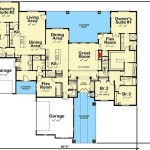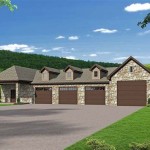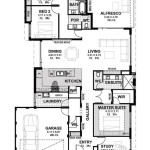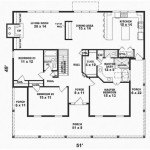Free Tiny Home Building Plans: A Resource Guide
The burgeoning tiny home movement has spurred significant interest in sustainable and affordable housing solutions. A central component of this movement revolves around accessible construction plans, particularly those available free of charge. Free tiny home building plans offer an entry point for individuals seeking to construct their own diminutive dwelling, fostering self-sufficiency and reducing housing costs. However, navigating the landscape of free plans requires careful consideration of design quality, structural integrity, local building codes, and overall suitability to individual needs.
The availability of free tiny home plans represents a democratization of the building process. These plans range in complexity, from basic shed-style structures to more elaborate designs incorporating loft spaces, kitchens, and bathrooms. Typically, these plans are disseminated online through various platforms, including websites, blogs, and online forums. While the "free" aspect is appealing, it's crucial to understand the potential limitations and responsibilities associated with utilizing such resources. This article will delve into the key considerations when evaluating and utilizing free tiny home building plans, highlighting what to look for, and what pitfalls to avoid.
Key Point 1: Evaluating the Quality and Completeness of Free Plans
The first and perhaps most critical aspect of using free tiny home plans is meticulously evaluating their quality and completeness. The allure of a free resource should not overshadow the importance of ensuring the plans are well-designed and suitable for construction. Plans that lack essential details can lead to costly mistakes, structural deficiencies, and potential safety hazards. Several factors contribute to plan quality including architectural soundness and clarity of instructions.
One of the first elements to assess is the origin and expertise of the plan's creator. Reputable architectural firms, experienced builders, or certified designers are more likely to produce reliable and well-documented plans. Plans originating from anonymous sources or individuals without demonstrable credentials should be approached with extreme caution. Scrutinize the documentation provided alongside the plans. Comprehensive documentation should include detailed construction drawings, material lists, step-by-step instructions, and specifications for all components. Incomplete plans may omit critical information, such as framing details, electrical wiring diagrams, plumbing layouts, or insulation requirements.
Framing details are especially crucial. Free plans should clearly illustrate the framing layout with precise measurements, ensuring structural stability and adherence to building codes. Look for plans that specify the type and dimensions of lumber required for framing, including studs, rafters, joists, and headers. The plans should also indicate the appropriate spacing for framing members to meet load-bearing requirements. Similarly, electrical wiring and plumbing diagrams are essential for ensuring the safe and functional operation of the tiny home. The plans should specify the location of outlets, switches, light fixtures, and wiring pathways. For plumbing, detailing should include the location of pipes, fixtures, and drain lines, along with information on venting and water supply connections.
Furthermore, the plans should address insulation and ventilation to ensure energy efficiency and prevent moisture buildup, especially in regions that experience extreme weather conditions. The plans should specify the type and R-value of insulation to be used in walls, ceilings, and floors. Ventilation details should include information on the number and placement of vents to promote airflow and prevent condensation. Verify compliance with local building codes and regulations. Building codes vary by region, and free plans may not always be compliant with local requirements. Before commencing construction, consult with local building officials to determine the applicable codes and ensure that the plans meet these standards. This may involve modifications to the plans or the acquisition of additional permits. Checking for specific code compliance for wind load and snow load are also important considerations.
Free plans often lack the level of detail and support found in professionally designed plans. Builders may need to supplement the free plans with additional research, consultation with experienced professionals, or the purchase of more detailed construction documents. The cost of correcting errors or omissions in free plans can quickly outweigh the initial savings, so thorough evaluation is paramount.
Key Point 2: Understanding Limitations and Potential Hidden Costs
While free tiny home building plans can seem attractive, it's essential to acknowledge their limitations and potential hidden costs. The initial absence of a purchase price does not equate to cost-free construction. In fact, inadequately planned tiny homes can eventually demand higher costs due to structural problems that need rectification or modifications required to meet changing needs and lifestyles that are not factored into the initial plan. Certain limitations can add cost to construction.
Free plans often lack customization options. Tiny homes are typically designed to reflect the specific needs and preferences of their occupants. Free plans may offer limited flexibility in terms of layout, size, and features, requiring builders to adapt the plans or make significant modifications. Modifying free plans can be time-consuming and expensive, potentially negating the cost savings associated with using free plans. Engaging a designer or architect to customize the plans can add significant expense. The cost of materials can fluctuate significantly depending on location and market conditions. Free plans typically provide a material list, but the accuracy of this list should be verified. Builders should obtain multiple quotes from suppliers to ensure they are getting the best possible prices. They should also account for potential waste and overages, as well as the cost of transportation and delivery.
Labor costs can also contribute to the overall expense of constructing a tiny home. While some builders may choose to DIY the entire project, others may opt to hire contractors for certain aspects of the construction, such as framing, electrical wiring, or plumbing. The cost of labor can vary significantly depending on the location, the experience of the contractors, and the complexity of the project. Unexpected expenses can arise during the construction process, such as unforeseen site conditions, material shortages, or changes to the original plan. Builders should set aside a contingency fund to cover these potential expenses. A general rule of thumb is to allocate 10-20% of the total budget for contingencies.
Furthermore, free plans may not include allowances for site preparation, foundation construction, or utility hook-ups. These costs can vary significantly depending on the location and the complexity of the site. Builders should obtain quotes from contractors for these services and factor them into the overall budget. Legal and permit fees can also add to the overall cost of constructing a tiny home. Local building codes require permits for various aspects of the construction process, such as building, electrical, plumbing, and mechanical work. The cost of these permits can vary depending on the location and the scope of the project. Builders should consult with local building officials to determine the permit requirements. Insurance is another cost to consider. During the construction phase, builders should obtain builder's risk insurance to protect against property damage or liability claims. Once the tiny home is complete, builders should obtain homeowners insurance to protect against fire, theft, and other perils. In many instances, free plans are bare-bones, leaving interior design, finishes, and appliances as added costs that can easily inflate the overall budget. It's important to consider these additional expenses when planning a build using free plans.
Key Point 3: Legal and Regulatory Considerations for Tiny Home Construction
Constructing a tiny home involves a complex web of legal and regulatory considerations that must be carefully addressed. Neglecting these aspects can lead to significant delays, fines, and even the forced removal of the tiny home. Thorough understanding of local regulations, zoning laws, and construction codes is crucial to ensuring compliance and avoiding legal complications. Zoning laws dictate how land can be used and what types of structures are permitted in a particular area. Many municipalities have specific zoning regulations that govern the size, location, and use of tiny homes. Some zoning districts may prohibit tiny homes altogether, while others may allow them under certain conditions, such as minimum lot size requirements, setback regulations, or height restrictions.
Builders should consult with local zoning officials to determine the applicable regulations for their specific location. They should also be aware of any potential zoning changes or amendments that could affect the legality of their tiny home. Building codes establish minimum standards for the construction and safety of buildings. These codes cover various aspects of construction, such as structural integrity, fire safety, electrical wiring, plumbing, and mechanical systems. Tiny homes are subject to the same building codes as conventional homes, although some municipalities may have specific codes or exemptions for tiny homes. It is essential to verify compliance with the most current versions of these codes.
Builders should consult with local building officials to determine the applicable building codes for their project. They should also ensure that their plans comply with these codes by obtaining building permits and inspections. Tiny home construction typically requires building permits, just like conventional homes. The permit process involves submitting plans to the local building department for review and approval. The building department will inspect the plans to ensure compliance with building codes and zoning regulations. Once the plans are approved, the building department will issue a building permit, allowing the builder to commence construction. Inspections are conducted at various stages of the construction process to ensure compliance with the approved plans and building codes. Common inspections include framing inspections, electrical inspections, plumbing inspections, and final inspections. Failure to obtain the required permits or to pass inspections can result in fines, delays, and even the forced removal of the tiny home.
Tiny homes are classified differently depending on the location and the specific design. Some municipalities classify tiny homes as accessory dwelling units (ADUs), which are secondary housing units located on the same property as a primary dwelling. Other municipalities classify tiny homes as recreational vehicles (RVs), which are designed for temporary living. The classification of a tiny home can have significant implications for zoning, building codes, and property taxes. Furthermore, long-term placement of a tiny home on wheels must adhere to rules to avoid it being classified as a mobile home park, which has more stringent requirements. It is critically important to classify the tiny home appropriately and check relevant requirements.
The legal landscape surrounding tiny homes is constantly evolving, and it is important to stay informed about the latest developments. Organizations such as the American Tiny House Association advocate for the recognition and regulation of tiny homes at the state and federal levels. Builders should monitor legislative and regulatory changes that could affect the construction and use of tiny homes. It's also advisable to seek legal advice from an experienced attorney to ensure compliance with all applicable laws and regulations. Engaging an attorney can help navigate the complex legal landscape and avoid potential pitfalls.

27 Adorable Free Tiny House Floor Plans Small

Free Tumbleweed Diy Tiny House Plans Houses

27 Adorable Free Tiny House Floor Plans Craft Mart

Quartz Tiny House Free Plans Ana White

Free Tiny House Building Plans Marjolein In Het Klein

Tiny House Floor Plans 32 Home On Wheels Design
:max_bytes(150000):strip_icc()/ana-tiny-house-58f8eb933df78ca1597b7980.jpg?strip=all)
4 Free Diy Plans For Building A Tiny House

27 Adorable Free Tiny House Floor Plans Cottage Small

Quartz Tiny House Free Plans Ana White

Free Shed Tiny House Floor Plan Release








